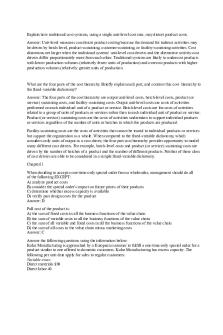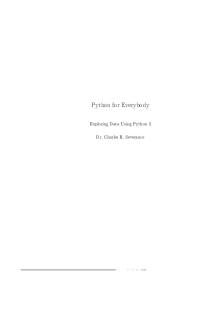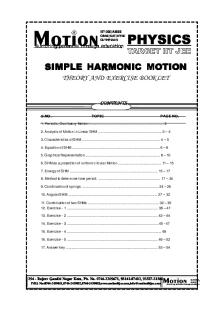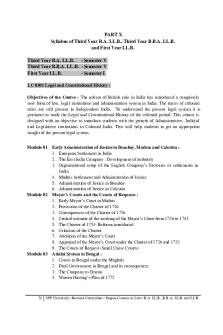Forensic 5 (Module-1-TO-4) nice! hdbsiwbdl bsjsb PDF

| Title | Forensic 5 (Module-1-TO-4) nice! hdbsiwbdl bsjsb |
|---|---|
| Course | Education |
| Institution | Central Bicol State University of Agriculture |
| Pages | 40 |
| File Size | 1.5 MB |
| File Type | |
| Total Downloads | 18 |
| Total Views | 343 |
Summary
Republic of the Philippines CENTRAL BICOL STATE UNIVERSITY OF AGRICULTURE San Jose, Pili, Camarines Sur 4418 cbsua.eduModule 1Polygraphy DefinedIt is the scientific method of detecting deception with the use of a polygraphinstrument. This is the new name of Lie Detection.Polygraph DefinedThe term “p...
Description
Republic of the Philippines
CENTRAL BICOL STATE UNIVERSITY OF AGRICULTURE San Jose, Pili, Camarines Sur 4418 www.cbsua.edu.ph
Module 1 Polygraphy Defined It is the scientific method of detecting deception with the use of a polygraph instrument. This is the new name of Lie Detection. Polygraph Defined The term “polygraph” means “many writings.” The name refers to the manner in which selected physiological activities are simultaneously collected and recorded. A polygraph measures and records several physiological indices such as blood pressure, pulse, respiration, and skin conductivity while the subject is asked and answers a series of questions. The belief underpinning the use of the polygraph is that deceptive answers will produce physiological responses that can be differentiated from those associated with non-deceptive answers; the polygraph is one of several devices used for lie detection. In the US federal government, a polygraph examination is also referred to as a psychophysiological detection of deception (PDD) examination. Lie detection, also referred to as deception detection, uses questioning techniques along with technology that record physiological functions to ascertain truth and falsehood in response. It is commonly used by law enforcement and has historically been an inexact science. It is the popular but misleading name of the Polygraph. Polygraph is also called “Truth Verifier” since statistics show that in the vast majority of instances the instrument verifies an innocent person’s truthfulness. Polygraph Examination Defined Polygraph examination is a series of test conducted on the person involved in the commission of a crime and referred to the polygraph branch, and the formulation of 1
questions which is answerable by yes or no. Concepts of Polygraph Examination 1.
Used to test an individual for the purpose of detecting deception or verifying the
truthfulness of his statements. 2.
It is done by recording identifiable physiological reactions of the subject, such as;
blood pressure, pulse rate, respiration and skin resistance. 3.
The effectiveness of the polygraph in recording symptoms of deceptions is based
on the theory that “a conscious mental effort on the part of a normal person to deceive causes involuntary physiological changes to an imminent danger to its well being. Objectives of a Polygraph Examination 1.
Obtain additional investigation leads to the facts of the case/offenses.
2.
Ascertain if a person is telling the truth.
3.
Locate the fruits or tools of the crime and whereabouts of wanted persons.
4.
Identify other persons involved (accomplices of the crimes).
5.
Obtain valuable information from reluctant witness.
6.
Eliminate the innocent suspects.
General Uses of the Polygraph Examination Polygraph examinations are widely used in the United States and in some other countries (notably, Israel, Japan, and Canada). In the Philippines, lie detectors are also being used by major companies, as well as by the major law enforcement agencies such as the Philippine National Police and National Bureau of investigation. Let us take a look at the three general categories of the uses of polygraph testing.
2
1.
Criminal Investigation A polygraph is mainly used for investigation. As a suspect commits a crime, it is the
examiners role to distinguish truth from falsehood as he reconstructs real facts concerning a crime being investigated. In every criminal investigation, the victim, suspect, and witness/es present their own version of the events surrounding an incident at a particular time and date. Each present their own story, although some may be tainted with lies for some personal reason. When properly used as an investigative tool, the polygraph can help the examiner eliminate the wrongfully accused and identify the guilty party. The test can also provide the examiner with a more efficient and productive use of his case time. Two Application of the Polygraph in a Criminal Investigation a.
Diagnostic Application- The ultimate goal of this application is to seek the
successful determination of truth or deception. This requires the services of an expert examiner with considerable training and education. He must carefully construct questioning techniques that can help provide scientific analysis of data. Results of this kind of test have also been admitted as evidence in court. b.
Interrogatory Application – This kind of application is less concerned with the issue
of truth, and usually seeks a confession of wrongdoing from the suspects. Essentially, in this application, the examiner uses the polygraph to induce sufficient fear in the subject so that his only recourse from emotional anguish is to confess his act. However, these have been frequently ruled out as inadmissible in court. 2.
Employment and Security Screening
The purpose of pre-employment screening is to determine whether or not a candidate is being truthful regarding his/her job application form. Any indication of deception can lead to an applicant’s disqualification. The questions cover many aspect, such as insurance history, employment habits, credits background, driving, drug and alcohol use, falsification of information, as well as criminal activities and associations. There are also areas that should not be questioned during the 3
polygraph test, such as religious and political beliefs and affiliations as well as racialgender-related topics. In the Philippines, there are also companies (especially those who manufacture IT parts), mining companies, and Philippine banks that resort to pre-employment screening in their hiring process or in the promotion of employees. Those companies often have their own polygraph machines and certified examiners trained under a refutable agency. This examiners, however, are only trained to conduct pre-employment screening and not other task. 3.
Clinical Setting
There are three classification of clinical setting, the detail of which are the following: a.
Disclosure Testing- In this classification the examiner aims to gather information
about a subject’s sexual history and current offense being investigated, allowing him to perform an assessment. b.
Maintenance Testing – A maintenance test is periodically administered (e.g., every
four to six months) to ensure one’s compliance with probation and parole requirements and treatment contracts, as well as for identifying the re-offending subjects. Maintenance testing can be best described as an ‘artificial conscience’. This
is because offenders
who are re-offending are identified immediately and then subjected to corrective action. c.
Specific Test-This issue test is given when scientific problems occurs. These
problems could involve the use of illegal drugs or allegations of re-offense. This type of test is narrowly defined and only deals with a single problem or issue.
DISCUSSION BOARD
Questions: 1. Define and explain the scientific methods of detecting deception. 4
2. Explain and understand the concepts of Polygraphy. 3. Identify and discuss the several uses of Polygraph instrument. 4. Explain the common terminologies encountered in thestudy of Polygraphy. 5. Discuss the importance of Polygraphy not only to criminal investigation but to other field as well.
References: AMSCI, Polygraph Examiner Basic Training Manual (2015)
Caballero, N. S., et.al, Polygraphy: The Art and Science of Lie Detection (2012); Wiseman’s Books Trading, Inc., Quezon City, Philippines.
Revisa, W. A., et.al, Polygraphy: Lie Detection (2011); Wiseman’s Books Trading, Inc., Quezon City, Philippines. The National Academies Press: The Polygraph and Lie Detection (2003): Washington D.C.
MODULE 2
EXPLORE (TASK/ ACTIVITIES)
Throughout history, man has sought various techniques for detecting and verifying the truth from suspects accused of criminal acts. Despite of primitive nature of some early techniques developed, each is based on the assumption that a physiological reaction occurs within a person whenever he or she is confronted with certain stimuli related to an event being investigated, and that such reaction would eventually manifest in recognizable symptoms that may or may not indicate deception. 5
Early Methods of Detecting Deception Red hot iron ordeal- Practiced on the hill tribe of Rajhmal in the north Bengal. An accused placed his tongue to a red hot iron nine times unless burned sooner. If burned, he is put to death as he is guilty. Not only just licking the iron but also he is made to carry a metal into his hands. Ordeal by the balance –an ordeal practiced in the Vishnu, India. The scale of balance is used where the accused is place in the other end while a counter balance is made. If he were found to be lighter than before then he will be acquitted. Boiling water ordeal – it is common in Africa. The method that the subject will be asked to plunge their right arms into the boiling water to the elbow and step into the other side of fire. All are told to undergo the test without a murmur. And when all are finished, they are told to return at the same time the next afternoon. The one who showed blisters would prove the thief (point out who is the one who steal among his tribe mates). Ordeal by rice chewing - an ordeal practiced by the Indians. It is formed with a kind of rice called sathee, prepared with various incantations. The person on trial eats the rice then spits upon an eyeful leaf. If the saliva is mixed with blood or the corner of his mouth swell or he trembles, he is declared then a liar. Ordeal with the red water- Used in a wide region of eastern Africa. The ordeal of the “sassy bark” or red water was used where the accused is made to fast for twelve hours then swallows a small amount of rice until he is imbedded in dark colored water. This Trial by combat water is actually emetic and if the suspect ejects all the rice, he is considered innocent, otherwise, guilty. Combination of drinks and food ordeal- an ordeal practiced by the west African region where the accused first fasted for 12 hours and the given small amount of rice to eat followed by large amount of black colored water. If the concoction was vomited, the accused was pronounced innocent, otherwise, guilty. Trial by accuse- a fight between accuser and the accused, whoever lost the battle will be adjudged guilty. Originated in India where an accuser could be hire somebody or bigger one to fight the accused. After the fight the loser will be adjudge as guilty of crime. It became the legal ordeal in England during the time of “King Henry III”. Trial by torture – The accused was put into a severe physical test. If the accused can endure such torture, he will be considered innocent. Drinking ordeal- the accused was given a decoction to drink by a priest –b if innocent; no harm befalls him, but if guilty, will die. Practiced in Nigeria and India. 6
Trial of the Eucharist -this trial is reserved for the clergy, and administered with pomp and ceremony. If the accused was guilty, it was believe the angel Gabriel will descend from heaven to prevent the accused from swallowing the food given to him. Practiced in the European countries. Ordeal by Heat and Fire – this accused was compelled to walk bare footed through a fire, if he remains unhurt then he is innocent. Practiced in East Germany, early Scandinavian countries and early England. Ordeal of Boiling Oil or Water- the accused was forced to dip his hands into the boiling water or oil and ask to pick up stone in it. If he remains unhurt then he is innocent. Practiced in Asian countries. Ordeal of red hot needle – a red hot needle was drawn through the lips of the accused; if innocent, no blood will be seen flowing out. Practiced in east Africa. Ordeal of the tiger –accuser and accused were placed together in the same and a tiger set loose upon them. If both were spared, further elimination followed. Practiced in Thailand. Test of the Cross Ordeal- the accuser and accused each were made to stand with arms crossed on their breast. The one who endured the longest was deemed to have told the truth, the other, is the liar. Practiced in Europe. Donkey’s Tail Ordeal – a donkey was placed in one room alone and was observed. If the donkey cried as judge of the guilty of crimes, then the accused is guilty. Forerunners of Scientific Methods of Detecting Deception Hypnotism This method was introduced by an Austrian Physician Franz (Friedrich) Anton Mesmer (1734-1815) in 1778. He believe in animal magnetism, by which in his own personal electro-magnetism, therapeutic effect influenced other persons. These effects produced were attributed to the state of mind of a subject whereby he is set up, and thereby instructed to sit quietly and gazed at flashing light or shiny object tangled in front of his eyes and to cooperate with whatever the hypnotist would like him to do. The Word Association Test This method was introduced in 1879 by Sir Francis Galton (1822-1911), an English Scientist and Anthropometrist. His experiment was later developed by Dr. Carl Gustav Jung (1875-1961), a Swiss psychologist and psychiatrist and the founder of Analytical Psychology. This method is done by giving a subject a long list of carefully selected stimulus words or 7
objects with other pictures combined with other irrelevant words, objects or pictures with instruction to respond with the very first word that may come to subject’s mind. Dr. Jung was able to observe how the thinking reactions were linked into the emotional habit of his subject. The theory behind this method is that, one word or idea is reflective of another word or idea and the expression of their association forms a meaningful picture. The Truth Serum Method This method was introduced by Dr. Edward Mandel House (1858-1938), a U.S. Physicist and diplomat and a confidential adviser to former U.S. President Woodrow Wilson. The term “truth serum” is a misnomer. The procedure does not make someone tell the truth and the thing administered is not a serum but is actually a drug. This method is based on the theory that “intervention through interrogation is made possible after dosage of drugs has been appropriately administered, which depresses the cerebral activity to point of unconsciousness, an influence called as the “House Receptive Stage” or the “Twilight Zone”. On this condition the subject is half asleep. The objective of the test is to extract from the subconscious mind of the subject the stored contents of the mind called “memory”. During the test, a drug called “Byosine Hydrobomide” is usually administered hypodermically to the subject in repeated doses until a state of delirium is induced. When the proper point is reached, the questions were answered by the subject truthfully. He forgets his acts or may even implicate others. Accordingly, he will disclose everything without evasiveness. Narco-analysis or Narco-sysnthesis This method of detecting deception was practically the same as that of administration of truth serum. The only difference is the drug used. The drug Sodium Amytal or Sodium Pentothal is administered to the subject. When the effects appear, questioning starts. It was claimed that the drug causes depression of the inhibitory mechanism of the brain and the subjects talk freely. The administration of the drug and subsequent interrogation must be done by a psychiatrist. Like the administration of truth serum, the result of the test was not admissible in court. Intoxication This was practiced by means of drinking alcoholic beverages as stimuli to obtain truth on the part of the subject. The subject for interrogation will be allowed to take alcoholic beverages up to the point of intoxication. Theoretically, when under the influence of alcohol, the power of control is said to be diminished; thus, the subject will tend to tell everything he knows or reveal all the relevant 8
information. Interrogation should be made during the excitatory effect of alcohol. The Psychological Stress Evaluator (PSE) When a person is under stress as when he is lying, the micro tremor in the voice utterance is moderately or completely suppressed. The degree of suppression varies inversely to the degree of psycho logic stress on the speaker. The psychological stress evaluator (PSE) detects, measures, and graphically displays the voice modulations that we cannot hear. When a person is relaxed and responding honestly to the question, those inaudible frequencies are registered clearly on the instrument. But when a person is under stress, as when he is lying, these frequencies tend to disappear. The Modern Method of Detecting Deception 1730 - DANIEL DEFOE- a British novelist who wrote an essay entitled “an effectual scheme for the immediate preventing of street robberies and suppressing all other disorders of the night” , wherein he recommended the taking the pulse of a suspicious fellow was a practical, effective and humane method for distinguishing truthfulness from lying. It was an early and insightful suggestion to employ medical science in the fight against crime. 1851 - JACQUES D’ ARSONVAL- A French scientist who declared that electricity is generated by the body. This was known as external friction. He asserted that those sweat glands in the body at times store the electricity and at other times discharges them. His works helped in the development of the galvanometer. 1886 - CHRISTIAN HANS STOELTING – founded the Stoelting Co., which became a leading product supplier on the physiological, psychological and psycho-physiological measurement. 1878 ANGELO MOSSO – used an nstruments called a plethysmograph in his research on emotions and fear in subjects undergoing questioning and he studied the effects of these variables on the cardiovascular and respiratory activity. Mosso studied blood circulation and breathing patterns and how these changed under certain stimuli. The use of the plethysmograph revealed periodic undulations or waves in a subjects blood pressure caused by the respiratory cycle in response to certain stimuli. Angelo mosso was the first scientist to report on experiments in which he observed that a persons breathing pattern change under certain stimuli and that this change, in turn, caused variation in their blood pressure and pulse rate. 1888 - CHARLES SAMSON FERE – a French Scientist who discovered that Electrodermal response is caused by an increase in the action of the Heart and vital energy converted with human emotions. He asserted that the human body has the ability to generate, store, discharged high voltage of static electricity. 1892 - SIR JAMES MACKENZIE- An English heart specialist who constructed the 9
Clinical polygraph an instruments to used for medical examinations with the capability to simultaneously record undulated line tracings of the vascular pulses (radial, venous and arterial), by way of a stylus onto a revolving drum of smoked paper. 1895 – CESAR LOMBROSO - Employed the First scientific instruments to detect Deception. He modified an existing instruments called a hydrosphygmograph and used this modified device in his experiments to measure the physiological changes that occurred in a crime suspect’s blood pressure and pulse rate during police interrogation. Although he did not invent the hydrosphygmograph, he was accorded the distinction of being the first person to have used the instruments successfully as a means for determining truthfulness from deception in crime suspects. 1897 – GEORGE STICKER – the first person to suggest the use of the galvanograph for detecting deception. He theorized that the galvanic skin phenomenon was influenced by exciting mental impressions. 1906 – SIR JAMES MACKENZIE – refined his clinical polygraph in his article entitled, ...
Similar Free PDFs

Amcat automata 5 - Nice
- 2 Pages

Ch11 - nice
- 16 Pages

Pythonlearn - Nice
- 249 Pages

A3P1 - Nice
- 13 Pages

Unit1 - NICE
- 58 Pages

Naasa - Nice
- 4 Pages

Etech 2 - NICE
- 85 Pages

Dokument bez tytułu - nice
- 9 Pages

Manuale- NICE - BIO-FLO
- 1 Pages

Theory-jeemain - nice lectures
- 35 Pages

Llb syllabus 1 - Nice
- 4 Pages

Semana 6 - Nice
- 2 Pages
Popular Institutions
- Tinajero National High School - Annex
- Politeknik Caltex Riau
- Yokohama City University
- SGT University
- University of Al-Qadisiyah
- Divine Word College of Vigan
- Techniek College Rotterdam
- Universidade de Santiago
- Universiti Teknologi MARA Cawangan Johor Kampus Pasir Gudang
- Poltekkes Kemenkes Yogyakarta
- Baguio City National High School
- Colegio san marcos
- preparatoria uno
- Centro de Bachillerato Tecnológico Industrial y de Servicios No. 107
- Dalian Maritime University
- Quang Trung Secondary School
- Colegio Tecnológico en Informática
- Corporación Regional de Educación Superior
- Grupo CEDVA
- Dar Al Uloom University
- Centro de Estudios Preuniversitarios de la Universidad Nacional de Ingeniería
- 上智大学
- Aakash International School, Nuna Majara
- San Felipe Neri Catholic School
- Kang Chiao International School - New Taipei City
- Misamis Occidental National High School
- Institución Educativa Escuela Normal Juan Ladrilleros
- Kolehiyo ng Pantukan
- Batanes State College
- Instituto Continental
- Sekolah Menengah Kejuruan Kesehatan Kaltara (Tarakan)
- Colegio de La Inmaculada Concepcion - Cebu



